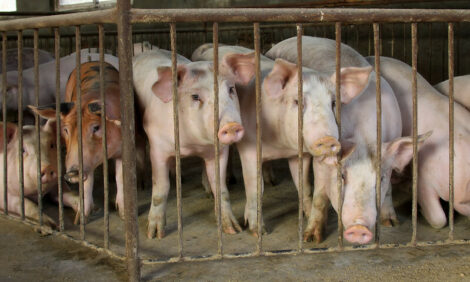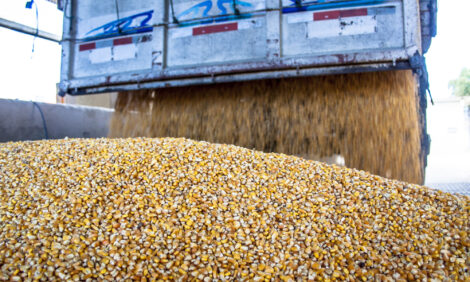



Strep suis continuously challenges US herds
It’s not unrealistic to say that if you checked the nasal cavities or tonsils of any group of pigs, you would find Streptococcus suis (Strep suis). While the strain and impact can vary widely, this commensal bacterium is on virtually every hog farm.“There are differences as far as prevalence for strains when you look across the US and the world, but that changes as immunity waxes and wanes,” Matt Sturos, DVM, veterinary pathologist, University of Minnesota, told Pig Health Today. “That also changes as the bacteria move around and evolve.”
That’s why it’s important to monitor a herd’s Strep suis strain and impact. Although there are more pathogenic or virulent strains that are capable of causing more severe disease, Sturos noted, the outcome is influenced both by the herd’s existing immunity and the virulence of the strain.
“If a herd has one particular serotype of Strep suis and a new one is introduced, the pigs may have issues for a period of time,” he said. “That’s not to say that the new genotype or strain is more virulent than the one the herd already had; it’s just that there isn’t existing immunity in the pigs.”
Pig-to-pig transmission
“It seems there are increasing amounts of Strep suis disease,” Sturos said. “It is a problem for producers today and something we address at the [University of Minnesota] diagnostic lab quite frequently.”
Fomites and people can bring Strep suis on to a farm, but pig-to-pig transmission is the primary route. It’s not a problem for every pig. In fact, a pig can be infected with Strep suis and not develop any associated disease.
The bacteria can challenge any age pig, but young pigs are most at risk — sometimes in the farrowing room, but more commonly in the nursery, especially when mixing pigs from different sources. “When you mix young pigs that have variable levels of immunity, you get increased replication and circulation of different pathogens, and Strep suis is no different,” Sturos noted.
For older pigs — finishers and sows — Strep suis doesn’t present as much of a problem, but any number of stressors can trigger a challenge.
Chameleon-like infections
For pigs that develop disease, there are different manifestations that add to a farm’s overall management challenge.
One is related to septicemia. In this case, the bacteria move from the epithelial surfaces into the pig’s nose and tonsils, eventually reaching the blood. “Once it’s in the blood it can go many different places,” Sturos said. “It can reach the brain and cause meningitis.”
Those pigs usually have trouble standing. As the infection progresses, the pig will become recumbent and eventually start paddling and then die. Notably, those are the central nervous system signs that are commonly cited.
Another manifestation is the spread of bacteria through the blood to distant sites, such as the pigs’ joints. This results in swollen joints or arthritis. Again, the affected pigs have difficulty walking and don’t want to get up.
If the bacteria get in to the lungs, they can cause pneumonia. “Sometimes it reaches the smooth surfaces of the thorax inside of the chest cavity and the abdominal cavity. We call that polyserositis,” Sturos added. “Those serosal surfaces can become inflamed, and those pigs may not have specific signs; they are just kind of poor-doers.”
The most dramatic and frustrating outcome is when otherwise healthy, robust pigs die suddenly. “Those again are due to septicemia, but there won’t be any clinical signs prior to death,” he noted. “We see this occur more as different strains move through.”
Genomic testing prospects
Strep suis is easy to grow, which makes aerobic culture a quick and easy diagnostic confirmation. “At the lab we use MALDI-TOF, which is a mass spectrometry method of looking at the proteins,” Sturos said. “That will tell us what type of bacteria, genus and species.”
To determine whether an animal had Strep-related disease it’s important to do a necropsy, sending tissues into a diagnostic lab to check for polyserositis and the brain for signs of meningitis.
“Genome sequencing would come after you have a bacterial isolate, which would help characterize that bacteria to determine if it’s the same one you were dealing with last month or 6 months ago or is it something new,” he said. “We use that information to look for virulence genes or virulence-associated factors, which all help the farmer and veterinarian develop a management plan.”
However, Sturos cautions that identifying a new variant within a herd doesn’t necessarily require a whole new plan. Some strains are not pathogenic. “It could be an opportunist — that the pig had some other stressor and the bacteria got into the systemic tissues,” he noted. “We have to look at the farm historically and keep an eye on the strain to see whether it comes back again.”
Other times a genotype may prompt the decision to change vaccine strategies, including developing an autogenous vaccine, to boost herd immunity. “Now we have the capability of saying ‘let’s look at that isolate and make sure it fits with what you think your problem is’ before you spend money on thousands of doses,” Sturos said.
He sees Strep suis genome sequencing as an opportunity to gather valuable information, especially for producers with multiple sow farms and pig flows. “It’s important to know what you’re dealing with as you’re moving pigs,” he said. “It may not be economically feasible in every situation, but it’s an important part of disease management for the industry, and I see it increasing as we go forward.”






